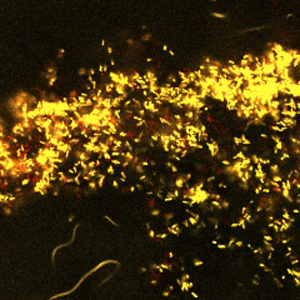Earthworms are common soil organisms that influence the fertility of soils by altering the nutrient availability to plants. These nutrients include forms of nitrogen, phosphorous and carbon. The microbial community within earthworms releases nitrous oxide, degrades cellulose, and stimulates the growth of fungi that can break down cellulose.
The earthworm egg capsule microbial community represents the seed population for the juvenile, and then adult, organism. Acquiring the complete set of genetic data from the earthworm metagenome will provide a resource for future studies in a variety of areas. Understanding the bacterial component of earthworm eggs is relevant to understanding the carbon and nitrogen cycles in the soil, which in turn influence the levels of greenhouse gases and soil fertility. Earthworms are able to greatly alter the biogeochemistry of the soil, and these changes can lead to high soil fertility, which in turn influences net carbon absorption by supporting the growth of plants. Insights into the function of microbial communities in earthworm eggs which support the growth of plants could lead to improvements in crop efficiency and energy conservation.
In addition, sequencing the bacteria also offers potential for improving the use of plant cellulose for biofuel production. Ethanol production is currently hampered by the slow and inefficient degradation of cellulose; which the microbes inside earthworms are known to be capable of efficiently breaking down.

Photo: Seana Davidson, University of Washington
Principal Investigators: Seana Davidson, University of Washington
Program: CSP 2010